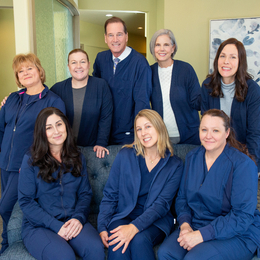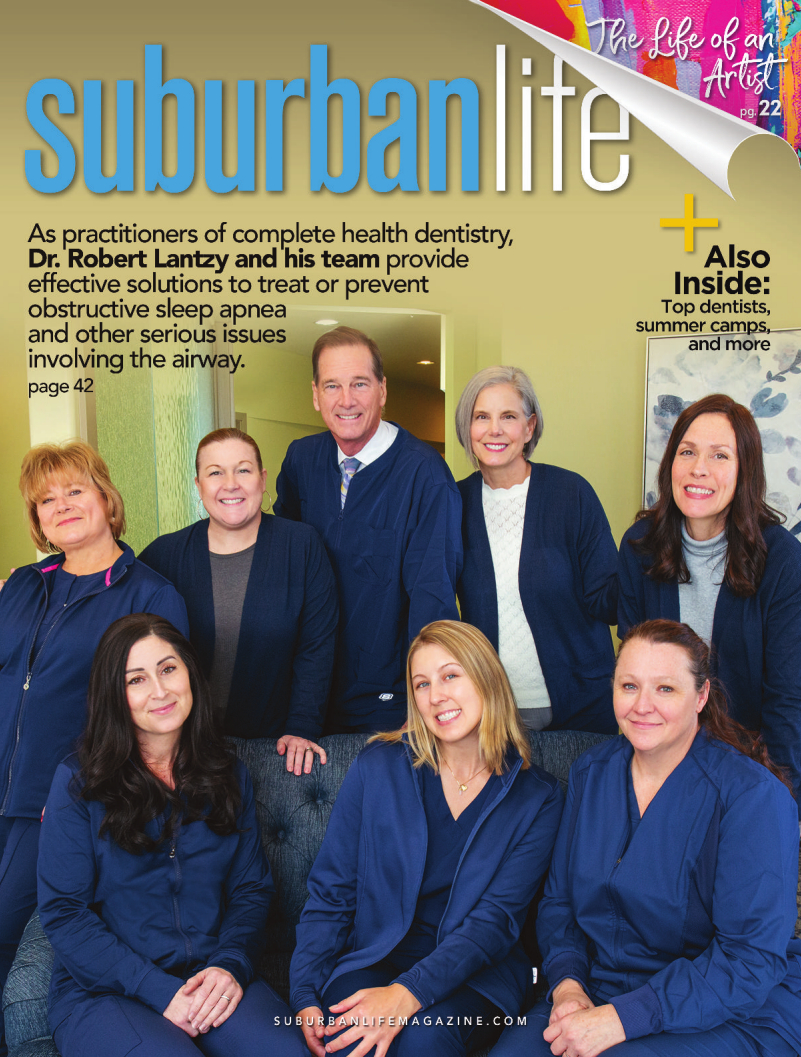
Breathe Easy
As practitioners of complete health dentistry, Dr. Robert Lantzy and his team provide effective solutions to treat or prevent obstructive sleep apnea and other serious issues involving the airway.
“Dentistry is not just about the teeth and gums anymore,” says Robert A. Lantzy, D.M.D., the leader of his Bucks County-based dental practice for nearly 40 years. “Everything is interconnected.”
As practitioners of “complete health dentistry,” Dr. Lantzy and his team provide care that considers all aspects of a patient’s health and how the many different aspects affect one other. The link between oral health and systemic health is a fine example, but that’s just the tip of the proverbial iceberg. They also pay particular attention to the growth and development of the facial structures, which can affect the airway and, in turn, pretty much everything else.
Dr. Lantzy cites obstructive sleep apnea (OSA), often caused by an underdeveloped jaw, as a particular area of interest. OSA causes one’s breathing to stop and restart many times during sleep, thereby preventing the body from getting the rest it needs to achieve optimal performance. Countless medical problems can stem from untreated OSA, ranging from chronic fatigue and ADHD, to depression and sexual dysfunction, to potentially lethal ailments such as cardiovascular disease, diabetes, and some forms of cancer.
“OSA puts stress on the mind, the heart, and other parts of the body,” Dr. Lantzy adds. “When the body is unable to recoup at night, it is unable to handle everything it has to deal with on a daily basis. Think of it like charging a phone. God forbid the battery in our phone goes dead; we need to place the same priority on recharging our bodies. OSA prevents that recharging from taking place.”
While some patients come to Dr. Lantzy realizing they struggle with OSA, others are unfamiliar with the “telltale signs”; they only know that they’re always tired, in a mental fog, or dealing with some other unexplainable issue. A sleep study can be used to diagnose sleep disorders such as OSA. The most common prescription for the condition is a CPAP (continuous positive airway pressure) machine, which opens the airway during sleep. While effective, CPAP is intolerable to some.
“A lot of people consider CPAP noisy and uncomfortable, though some of the newer ones are much less noisy than they used to be,” Dr. Lantzy adds. “It’s only effective if it’s being used, and only 50 percent of patients are compliant within three or four months. But there are other options.”
OSA can be treated surgically, but Dr. Lantzy recommends a more conservative and less invasive approach. He cites oral appliance therapy, which keeps the airway open during sleep by advancing the lower jaw forward and preventing the tongue from blocking the throat. Another option: custom palatal expanders through providers such as VIVOS.
“A palatal expander will apply low, slow pressure to expand the roof of the mouth,” Dr. Lantzy says. “It’s a little bigger than a mouthguard, and an adult would need to wear it 12 to 16 hours a day. After about a year [of use], it will have effectively created more space in the mouth so everything fits more comfortably. You might need some clear aligners [such as Invisalign] to finish the case, but the airway is more developed as a result.”
In some cases, Dr. Lantzy might prescribe myofunctional therapy performed by one of his hygienists, Marcie Lear. Myofunctional therapy uses exercises and behavior-modification techniques to essentially “retrain” the tongue, lips, and jaw. Dr. Lantzy says myofunctional therapy can help reduce OSA by 50 percent in adults, with an even higher success rate among children.
Speaking of children, Dr. Lantzy’s practice offers specialized guidance to monitor the growth and development of a child’s smile. Using a series of appliances, or guides, that progress at different stages of a child’s development, Dr. Lantzy can help steer the teeth into the correct position in the mouth. The guide system essentially lays the framework for a straight smile with healthy occlusion and, in the process, prevents developmental issues such as OSA. In addition, the guide system may preclude the need for orthodontics later in a child’s life.
Even after almost 40 years of practicing dentistry, Dr. Lantzy still enjoys the work, still treasures the opportunity to help others. He also loves to learn, which is why he’s continually attending educational seminars, delving into the latest research, and continually looking for new and better ways to safeguard his patients’ health.
In turn, he and his team like to share their learnings with the community. The pandemic put a temporary pause on the practice’s community-engagement efforts, such as fundraisers and outreach programs, but it has since reentered the fray. Whether they are out in the community or meeting with patients face to face in the Newtown office, Dr. Lantzy and his team strive to help others live healthier, happier, and more enriching lives.
“Besides dental health, we’re always reminding people of the importance of diet, weight, and exercise,” he says. “People want to live longer, and we’re here to help them make sure their health span matches their lifespan. We want them to be happy about living longer because they’re in good health. It’s why I went to school for this, and it’s why I continue to add to my knowledge base through continuing education. I enjoy learning new things, especially when those new things can improve the health of our community and the people who live in it.”
Robert A. Lantzy, DMD, LLC
11 Friends Lane, Suite 100
Newtown, PA 18940
(215) 860-5901
www.buckscountydental.com
11 Friends Lane, Suite 100
Newtown, PA 18940
(215) 860-5901
www.buckscountydental.com
Photo by Alison Dunlap
Published (and copyrighted) in Suburban Life magazine, January 2024.



